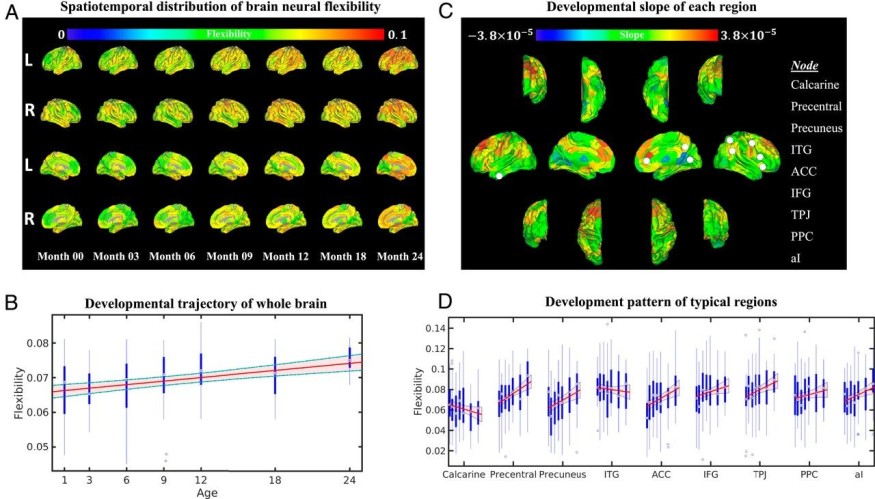The brain of an adult human is functionally flexible. It is thought to contribute to cognitive flexibility that refers to the ability to switch between one mental process into another based on the external stimulus and its task demands.
Cognitive flexibility helps predict academic success, reading ability, creativity, resilience to stress, and lowers the risk of developing psychiatric disorders.
Since tools in assessing cognitive flexibility in early infancy are lacking, scientists from the UNC Biomedical Research Imaging Center (BRIC) focused on examining the spatiotemporal developmental features of neural flexibility at the first two years of a child's life.
The researchers used brain imaging to study the emergence of neural flexibility, which is the frequency in which brain regions changes its role and which underlies the concept of cognitive flexibility.

Neural Flexibility Increased with Age
The study, published in the Proceedings of National Academy of Sciences (PNAS), reveals that brain regions with high neural flexibility are consistent with the core regions in the brain which supports cognitive flexibility processing in adults. Meanwhile, brain regions that control the basic brain function have lower neural flexibility which demonstrates that the emergence of the functionally flexible brain in infancy.
In this research, the team used magnetic resonance imaging to examine brain activity for up to seven times in 52 infants below the age of two. The team is led by Dr. Weili Lin, a distinguished professor of neurological medicine and vice-chair of basic research at the UNC Department of Radiology.
The study shows that neural flexibility across the brain as the age increases. Specifically, neural flexibility is seen in brain regions that control movement, which enables infants to learn motor skills.
Moreover, neural flexibility also increased with age in some parts of the brain that involves higher-level cognitive processes, like response inhibition, memory, attention, and indicates a continuous growth of functional networks as babies turn into toddlers.
Researchers think that age-related neural flexibility implies early developmental processes affects the cognitive flexibility in adults. That means cognitive flexibility in adults may have started during the first two years of life.
Read Also: Novel MRI Techniques May Have Better Outcomes in Treating Tremors Associated to Parkinson's Disease
Predicting Cognitive Outcomes Later in Life
The researchers also found that brain regions with high neural flexibility reveal weak and unstable connections from this brain region to the other parts of the brain. That shows that these brain regions can instantly change allegiances between different functional networks.
On the other hand, neural flexibility in brain regions that controls visual functions remains low during the first two years of life, which suggests that these regions have already matured.
Meanwhile, lower levels of neural flexibility in visual brain regions at the age of 18 months were associated with higher or better cognitive performance, as well as behavioral assessments at age five or six years old.
The findings of the research provide insights into the development of higher-level brain functions, as well as useful information in predicting cognitive outcomes later in life. This non-evasively assessment of cognitive functions also provide ways to assess those children with neurodevelopmental disorders.
Read More: Nearly Half of the COVID-19 Patients in ICU Showed Brain Abnormalities, MRI Scans Revealed
Check out more news and information on Neuroscience in Science Times.










